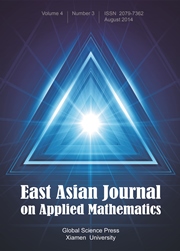Crossref Citations
This article has been cited by the following publications. This list is generated based on data provided by Crossref.
Fang, Xi-Ming
Lin, Fu-Rong
and
Wang, Chao
2017.
Estimation of a Regularisation Parameter for a Robin Inverse Problem.
East Asian Journal on Applied Mathematics,
Vol. 7,
Issue. 2,
p.
325.
Qu, Dan
and
Ma, Yan-Bo
2019.
The numerical solution of forward and inverse Robin problems for Laplace’s equation.
Boundary Value Problems,
Vol. 2019,
Issue. 1,
Wei, Linyang
Qi, Hong
Li, Guojun
Ruan, Shi-Ting
and
Li, Hongru
2021.
Tomographic reconstruction of refractive index fields based on laser beam deflection measurement.
Optics Communications,
Vol. 492,
Issue. ,
p.
126951.

